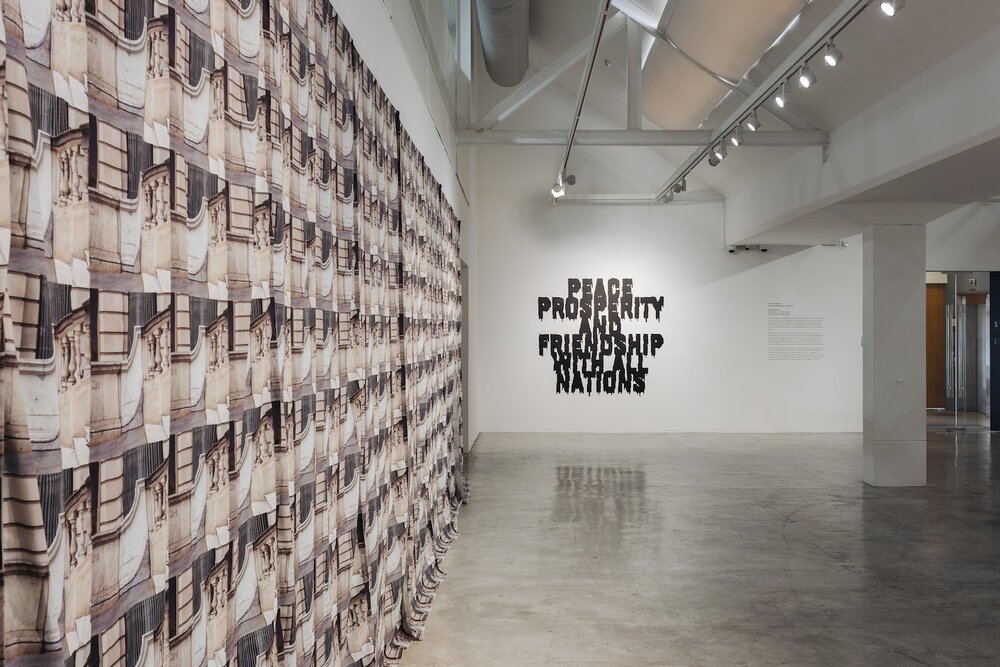‘The New Now III: Convergence’ at Gajah Gallery
Up-and-coming artists Dini Nur Aghnia, Kara Inez, and Leela Promwong
By Ho See Wah
Dini Nur Aghnia, ‘Sunrise at Prau’, 2018, flour clay on canvas board, 200 x 120cm. Image courtesy of Gajah Gallery.
‘The New Now III: Convergence’ at Gajah Gallery brings together works created by 19 young artists at the onset of their careers. While the previous two incarnations of ‘The New Now’ presented works solely from Singapore, this year’s iteration has widened its scope to include budding artists from various Southeast Asian countries, namely Indonesia, Malaysia, Philippines, and Thailand. The decision came from Gajah Gallery’s belief that “there is a wealth of talent still lying dormant in the region”. Through the show, Gajah Gallery provides visibility and validity to the practises of the show’s participants, many of whom are presently art students or recent graduates. In this trajectory, we can view the exhibition as a manifestation of the artists’ initial explorations of their own aesthetic language.
And while the notion of Southeast Asia as a region is still a rather contentious categorisation in itself, we may think of this convergence as an attempt to chart similitudes across the region. When once upon a time, the region was defined via colonial mappings based on geography, and in more recent decades, through political and economic blocs, are we able to consider other modes of elucidating a Southeast Asian identity in this current age?
The exhibition may not offer a straightforward answer to the aforementioned question, especially as Southeast Asia is simply too vast and undefinable in its ways of living and being. However, ‘The New Now’ does shed some light on how these young artists, based on their specific localities, aim to make sense of their surroundings and these help to draw parallels and empathy across borders.
Kara Inez, ‘Bunny’, 2019, silicone, rice and stockings, 24.5 x 20 x 11cm. Image courtesy of Gajah Gallery.
Take for example, the work of Malaysian artist Kara Inez’s ‘Bunny’. The grotesque form serves to incite feelings of shock and disgust in viewers, with the colour and texture reminiscent of corroding flesh. This morbid creature, repugnant yet fascinating, calls to attention the “defective, diseased, and mutated parts of the human body that are usually kept hidden”, in Inez’s own words. The conceptual strand of this work is further augmented by her use of the stocking within which the sludge is contained. This item that is used to mask and pervert the natural human figure is emblematic of the suffocating social constructs levied upon the female body. ‘Bunny’, which calls out the unreasonable pressures that are universally faced by many, is thus a work that cuts across social and geographical strata.
Leela Promwong, ‘The Power’, 2019, oil on canvas, 150 x 150cm. Image courtesy of Gajah Gallery.
While ‘Bunny’ is more abstract in nature in terms of concept and form, Thai artist Leela Promwong’s work examines her society in a narrative style. Immediately, one is taken in by the aesthetically elegant and mythical imagery that she has constructed on canvas and the plot makes itself clear. Oftentimes it is easier to understand an idea from fiction as opposed to recognising it in real life, for it is generally difficult to get a good overview of society from within. Thus, it is through the extrapolation of the fantastical onto real life that ‘The Power’ serves to revealreveals the “patterns of authority that are hidden within the political and social spheres in Thailand”, to quote Promwong. Though the artist specifically targets the phenomena of Thailand’s patronage system, the ingenuity of utilising a make-believe world is such that a non-Thai audience is also able to identify with the embedded ideas. As such, ‘The Power’ can serve as a point of comparison and contrast with the non-Thai viewers’ society as well.
Within the story of contemporary art and current times, the exhibiting artists are equipped with a wide range of tools and knowledge to create generously and diversely. While at first glance the artworks may not have much in common, we should not ignore the affinities that they share in geographical closeness and time in space. After all, this third edition of ‘The New Now’ draws its inspiration from the Japanese idiom ichi-go, ichi-e, which posits that every moment happens only once in a specific point in time and should be treasured in its brief existence.
As we move through the exhibition, we may find that the various works resonate with us in a myriad of ways. To this end, the artists are given the opportunity to prove that connection does transcend boundaries and we may very well find more commonalities with our geographical neighbours than meets the eye.
The New Now III: Convergence' is on view from 7 August to 25 August 2019, at Gajah Gallery. Do catch the exhibition in its final week.
















